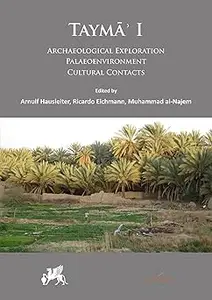
Free Download Arnulf Hausleiter, "Taymā' I: Archaeological Exploration, Palaeoenvironment, Cultural Contacts "
English | ISBN: 1789690439 | 2021 | 278 pages | PDF | 69 MB
Archaeological investigations in the north-western part of the Arabian Peninsula has increased during the last 15 years. One of the major sites in the region is the ancient oasis of Taymā', known as a commercial hub on the so-called Incense Road connecting South Arabia with the Eastern Mediterranean. In the context of this new research a multidisciplinary project by the Saudi Commission for Tourism and National Heritage (SCTH) and the Orient Department of the German Archaeological Institute (DAI) has been investigating the archaeology and ancient environment of Taymā' since 2004. A major aim of this project was the development of new perspectives of the site and the region, characterised by elaborating the local socio-cultural and economic contexts. So far, Taymā' has been known mainly through exogenous sources.
The present volume is the first of the publication series of the Saudi-German archaeological project and focuses on three fundamental aspects of research at Taymā': the current archaeological exploration of the oasis is contextualised with previous and ongoing research within the region, while at the same time offering a first overview of the settlement history of the site, which may have started as early as more than 6000 years ago. New information on the palaeoenvironment has been provided by multiproxy- analysis of sediments from a palaeolake immediately north of the settlement. The results indicate an Early Holocene humid period in the region that is shorter than the so-called African Humid Period. The abrupt aridification at around 8 ka BP, known from other regions in the Near East, is also attested in north-western Arabia. The reconstruction of the past vegetation of the site and its surroundings demonstrates that oasis cultivation at Taymā' started during the 5th millennium BCE with grapes and figs, rather than with the date palm. According to hydrological investigations on water resources, groundwater aquifers provided the main source of local water supply. These were exploited through wells, some of which have been identified in the area of the ancient oasis. Finally, since the time of early travellers to Northwest Arabia evidence of cultural contacts has been observed in the records from the site, which had been occupied by the last Babylonian king, Nabonidus (556-539 BCE) for ten years. A historical-archaeological essay on Egypt and Arabia as well as a study on the ambiguous relationship between Assyria and Arabia - characterised by conflict and commerce - shed new light on the foreign relations of ancient Taymā'.
Read more
